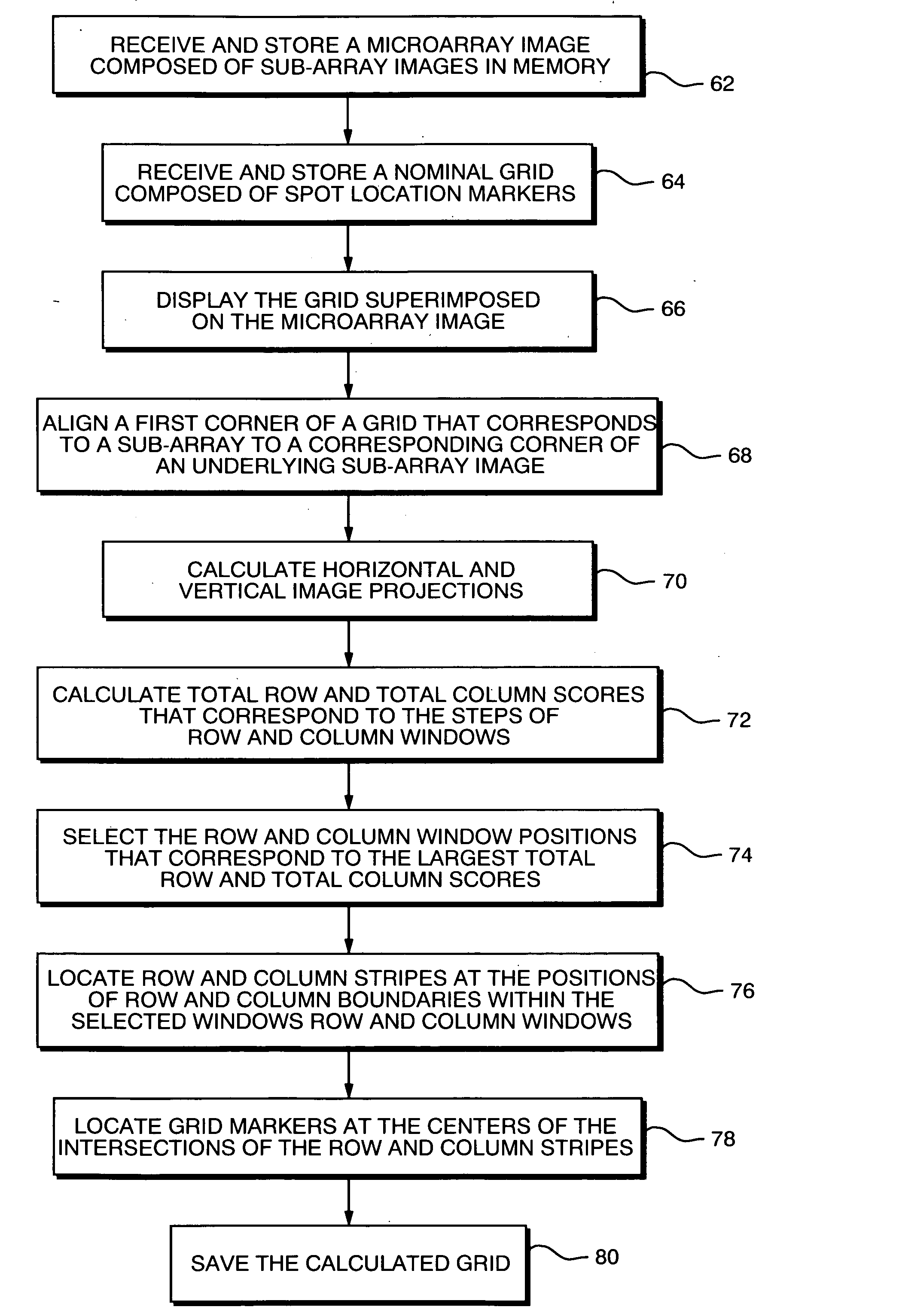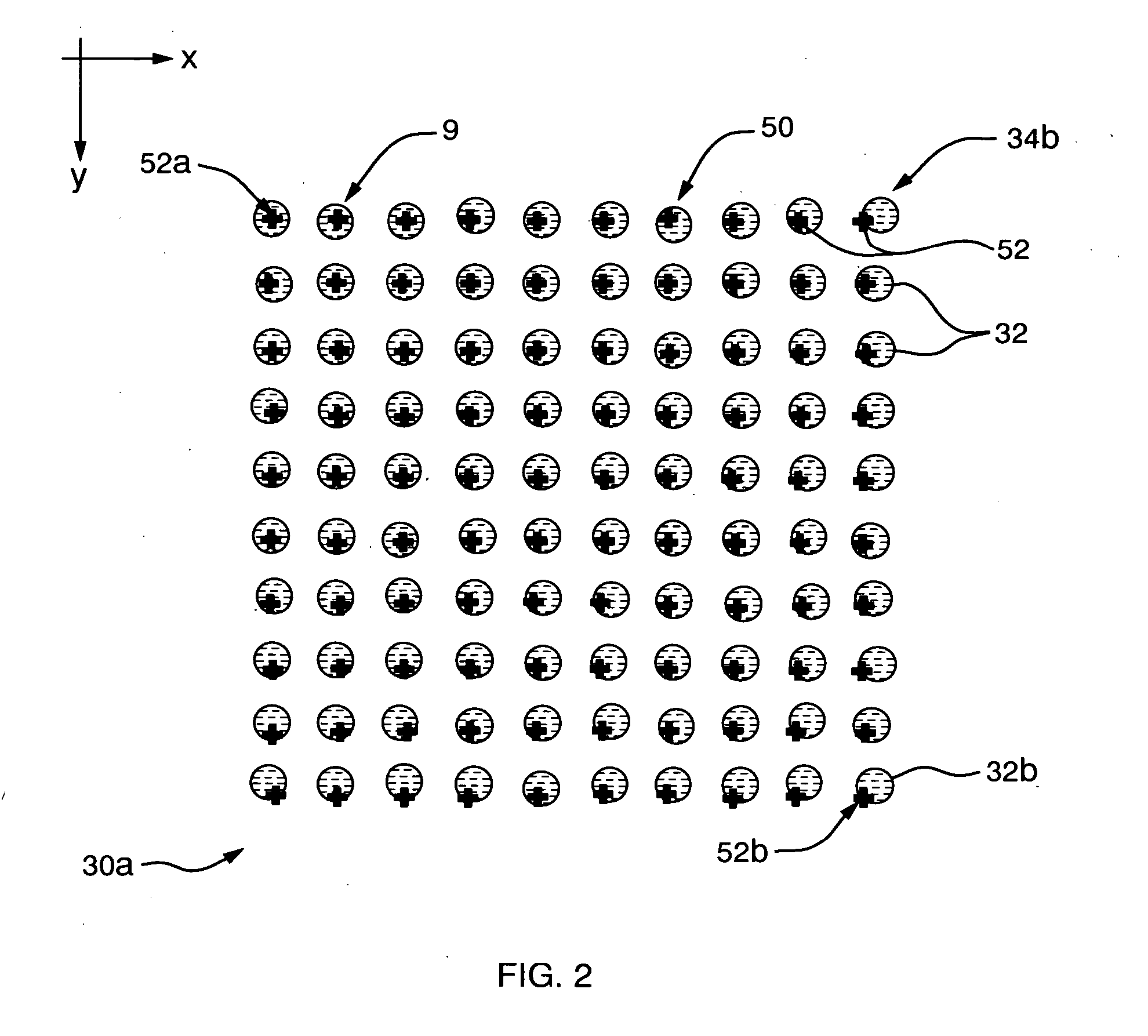Method and apparatus for automatically segmenting a microarray image
a microarray image and automatic segmentation technology, applied in the field of microarrays, can solve the problems of small variations, scan mechanism location accuracy errors in the scanner, and the number grid rarely aligns well with the underlying scanned microarray image, and achieves the effect of accurately reducing the sum significantly, and segmenting the microarray image quickly
- Summary
- Abstract
- Description
- Claims
- Application Information
AI Technical Summary
Benefits of technology
Problems solved by technology
Method used
Image
Examples
Embodiment Construction
[0043] The present invention may be implemented as program instructions for configuring a microarray image analysis or quantitation workstation such as the one shown at 10 in FIG. 14. As shown there, workstation 10 may include a central processing unit (CPU) 12 which operates on program instructions in a memory 14 using a processor in CPU 12. A scanner 16 scans microarrays to obtain corresponding image data which may be stored in an image storage device 18 connected to CPU 12. A user may input instructions concerning the microarray image analysis by way of a keyboard 20 or a mouse 22 connected to CPU 12 and images and other data may be displayed on a monitor 23. Also, the workstation usually includes a printer 24 for printing images and data. Image data representing the nominal grid may be loaded into the workstation via a disk drive 26 and stored in memory 14 along with the program instructions for implementing the present invention.
[0044] Refer now to FIG. 1 which illustrates an ...
PUM
 Login to View More
Login to View More Abstract
Description
Claims
Application Information
 Login to View More
Login to View More - R&D
- Intellectual Property
- Life Sciences
- Materials
- Tech Scout
- Unparalleled Data Quality
- Higher Quality Content
- 60% Fewer Hallucinations
Browse by: Latest US Patents, China's latest patents, Technical Efficacy Thesaurus, Application Domain, Technology Topic, Popular Technical Reports.
© 2025 PatSnap. All rights reserved.Legal|Privacy policy|Modern Slavery Act Transparency Statement|Sitemap|About US| Contact US: help@patsnap.com



